This reading route is full of surprises. We did not know how the passages about the stadiums could be connected to one another. It turns out that they share a historical background of national baseball and they have witnessed the rise and fall of political powers of Taipei.
On the 1935 map we find the Maruyama Ground. Decades later, the Maruyama Ground became a soccer stadium, a baseball field (later replaced by the Taipei Arena) arose in the area of Zhonglun 中仑, and a future stadium (later named Taipei Dome) would stand next to the Taipei Railway Workshop 铁道工厂. We can see their corresponding locations on the Google Map.
Map on the left: a close-up of 大臺北鳥瞰圖 by 大窪四郎 (published by 南天書局)
Title background image credit: Leah Suffern
1. a baseball field
1934 map: in Zhonglun 中仑
1959 to 2000: a baseball field (Taipei Municipal Baseball Stadium 台北市立棒球场)
said to have a future stadium on the site—巨蛋落何处,漫漫无期路 by 张启楷 from 中国时报
2005 to present: the Taipei Arena 台北小巨蛋, next to the Taipei Municipal Stadium 台北田径场, both in the block called Taipei City Sports Park 台北市体育园区
the venue of the 2017 Summer Universiade
2. a soccer stadium
1923: the Maruyama Ground
to welcome the Showa, then still the Crown Prince, on his southern inspection trip—Page 160 (页 201)
1989 to 2008: a soccer stadium (Zhongshan Soccer Stadium 中山足球场)
said to have a future stadium on the site—Page 160 (页 201)
2010 to present: remodeled
the venue of the 2010 International Garden and Horticulture Exhibition
3. a future stadium
pre-1994: see a soccer stadium, 1989 to 2008
after 1994: a future stadium named Taipei Dome 台北大巨蛋
said to be on the site of the Songshan Tobacco Factory > the Taipei City Sports Park > the Songshan Tobacco Factory—巨蛋落何处,漫漫无期路 by 张启楷 from 中国时报
under construction since 2007 to present: on the site of the Songshan Tobacco Factory
was to be the venue of the 2017 Summer Universiade
The baseball-watching population has decreased dramatically since the gambling incident in 2009. The Taipei Dome was originally intended to host baseball games for a huge audience, but years passed and things changed.
Watching concerts is part of my job. The Taipei Arena is not big enough to host big concerts.
There is already heavy traffic on the Zhongshan North Road next to the Zhongshan Soccer Stadium. I don’t think it would be any better to have a new stadium there. The key is how the transportation is planned.
There were basketball courts and woods, the densest in the area. Without the trees, we can only go underground to avoid the heat, which changes the way we view the city.
I doubt that the shopkeepers nearby are excited about the Taipei Dome. They are good on their own. With the new Taipei Dome they will have to pay for a higher rent.
However, I do believe Taiwan needs an international-scale stadium to host world-level games.
I don’t agree that this place should remain “wild.” It won’t be accessible to the public. Instead it should be planned and greened.
In a BOT (build–operate–transfer) project there should be good communication between the private entity and the government, rather than fights via mass media.
We can’t BOT everything. We can’t evaluate everything by the profit it can make. The Tobacco Factory area was a light-industry neighborhood. Then the Taipei Railway Workshop brought auto pair technicians. I grew up nearby and witnessed the changes, but the residents now only know their apartment security guard rather than one another. The residents on the other side of the railway care even less about what happens to this side. It turned out the local values were voiced from outside (such as the Tree Protection Group) rather than from inside.
I watched baseball games. The Taipei Arena is too small to host baseball games.
I don’t watch baseball games nor concerts, but I live next to the Taipei Arena. Whenever there is a concert, the Nanjing East Road will become chaos after the concert. The Zhongshan Soccer Stadium on the outskirts should be better.
I live right next to the Tobacco Factory. It has been behind fences since the construction of MRT was launched. Before the construction of Taipei Dome, I had no chance to see what was inside.
The Tobacco Factory is located in the “egg yolk” of the city: the Xinyi District in the east of the city, where people can go to a movie at the Vieshow Cinemas and visit the Sun Yat-sen Memorial Hall. It makes better sense to have a new stadium here than in the less thriving area of the Taipei Arena.
We don’t need another “Bird’s Nest.” The place could have remained as “wild” as it was, a “green egg-yolk” of the city.
Our company, with the latest laser printing technology, made the 3D model for the Taipei Dome. The model we made did not consist of a hotel or a shopping mall.
I have visited Hong Kong companies, who complained that the Taipei City Government made it too difficult to adjust construction plans, not to mention to make reasonable profit.
1. a baseball field
Our Stop 1 passage mentions a baseball field. It was in the middle of nowhere, except for factories along the railway such as the Altex, on the 1935 map.
The Taipei Arena on the close-up Google Maps is where the baseball field was. We are able to identify the baseball field and its location because the narrator said it was close to the “largest hotel and shopping mall in all of Southeast Asia” and a movie theater showing “a double feature at Qingkang.” The hotel-mall, movie theater and baseball field are marked on the close-up Google Maps from left to right, top to bottom.
Map on the left: a close-up of 大臺北鳥瞰圖 by 大窪四郎 (published by 南天書局)
Page 117a. One time you and A skipped class to see a double feature at Qingkang for 20 NT, because one of them starred George Chakiris, A’s current obsession.
Page 117b. Refusing to walk alone across the quiet, gray baseball field, now that there was no game, fearful of being reminded that those ball players, who were about your age, were also getting old, you crossed to the other side of the street, which, to your surprise, was overgrown with weeds. Five years later a giant billboard would be erected on that spot, outlandishly claiming it as the future site of the largest hotel and shopping mall in all of Southeast Asia. Another five years would pass and the hotel complex would be completed, and then even later you would actually be married in one of the banquet rooms of the “outlandish” five-star hotel.
页 165a/137a. 一次你和A跷课去青康看二十元两部的电影,因其中一部是A那时最迷的乔治却克里斯。
页 165b/137b. 你不能独自一人走在没有球赛又寂静又灰色的棒球场外,怕会想到啊那些与你年纪相仿的球员英雄们都老了,便只好穿过马路到对岸,对岸不料也荒草长长,五年后这里会竖立起巨大广告看板,号称将在此建盖全东南亚最大的旅馆商场,鬼才相信。再五年后旅馆商场建成,你随后的婚礼竟就在那鬼才相信的五星级旅馆某宴会厅举行的。
[/et_pb_vertical_timeline_item][/et_pb_vertical_timeline]
a double feature at Qingkang
The Qingkang Theatre is remembered by the following bloggers:
But when we visited the place, we could only find a closed gate:
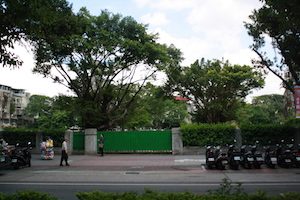
Photo Credit: Leah Suffern
baseball field
On the previous site of the baseball field is the Taipei Arena 台北小巨蛋. It is next to the Taipei Stadium 台北田径场, both in the block called Taipei City Sports Park 台北市体育园区.
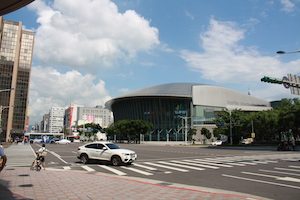
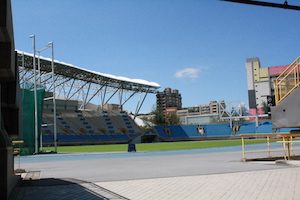
Photo Credit: Leah Suffern
the largest hotel and shopping mall in all of Southeast Asia
The “largest hotel and shopping mall in all of Southeast Asia” were the Asiaworld Plaza 环亚大饭店 and the Asiaworld Shopping Mall 环亚百货. In place of them are the Sunworld Dynasty Hotel 王朝大酒店 and the Breeze NAN JING 微风南京. Here are a picture of the shopping mall and what it looked like from the Taipei Arena 台北小巨蛋:
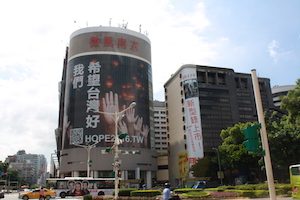
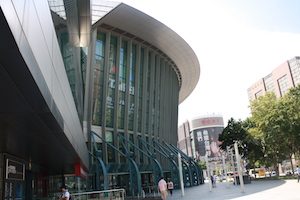
Photo Credit: Leah Suffern
2. a soccer stadium
Our Stop 2 and Stop 3 passages mention a soccer stadium (but translated variously as soccer stadium and football stadium). It was a sports ground (spelt in Japansese katakana as “ground” but translated as a “stadium” in the novel in English) in Yuanshan (or Maruyama in Japansese) surrounded by a zoo, a park, a river on the 1935 map, on the way from downtown to the shrine.
The close-up Google Maps show it is still a scenic outskirt of the Taipei city, but the sports ground turns into a soccer stadium, which is now used as an Expo Park.
Map on the left: a close-up of 大臺北鳥瞰圖 by 大窪四郎 (published by 南天書局)
Page 132. On the same evening 20 years later, you and your husband would go to a gathering purported to have been attended by 100,000 people. You racked your brain but could not fathom where that soccer stadium had come from and what the place had been used for before the stadium materialized.
Page 133. Refusing to admit that your ears were turning deaf or your eyes going blind, you decided to go alone to the football stadium on the postelection holiday, in the daytime, for you were shocked and distressed to be unable to recall what had originally been at the site, even though you’d spent most of your life in the city’s eastern district and hadn’t been off the island for a single moment over the past twenty years.
页 177/147. 二十年后,同一个日子同一个晚上,你和丈夫参加一个号称十万人的聚会,你完全想不起来这么好大一个足球场是哪来的,未建之前原是哪里?
页 178/148. 因为不肯承认耳不聪目不明,于是投票日次日的那个额外假日,你决定独自去一趟白天的足球场,因为非常惊恸如何可能想不起原先那是哪里,尽管你长年居住城东,二十年来未曾须臾离开过此海岛。
[/et_pb_vertical_timeline_item][et_pb_vertical_timeline_item title=”Stop 3″ use_read_more=”off” animation=”off” text_font_select=”default” text_font=”||||” headings_font_select=”default” headings_font=”||||” use_border_color=”off” border_style=”solid”]
Page 160. The same sort of annoying knowledge told you that the original site of the soccer field that had sprung up out of nowhere had been a stadium built in 1923 to welcome the Showa, then still the Crown Prince, on his southern inspection trip. In the early years of the Nationalist government, it was lent to the Seventh Fleet Military Assistance and Advisory Group. On one soccer game night, the mayor-elect described his blueprint for the city’s future, in which the soccer field might be used as the site of a stadium. By then, you, along with many more sweet gum trees, would have to join ranks with Chen Weiying.
页 201/167. 同样讨厌的知识告诉你,原来凭空多出来的那大足球场原址是一九二三年建的运动场,未了做欢迎还是太子的昭和南巡之用,国府初期给第七舰队美军顾问团使用,刚当选的市长在足球之夜描绘过未来市政蓝图,足球场也许作为巨蛋球场用地,届时,你与更多的老年枫香都将加入陈维英队伍了。
[/et_pb_vertical_timeline_item][/et_pb_vertical_timeline]
Expo Park
The seats of the soccer stadium are seated by plants:
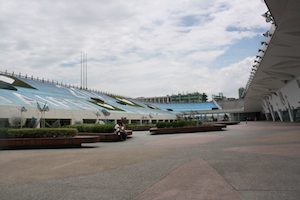

Photo Credit: Leah Suffern
3. a future stadium
To visit this “future stadium” we have to re-read the passage on Page 160. Since it was a “future stadium,” of course it did exist in the novelist time or on the Japanese maps.
The future stadium is called 巨蛋球场 in Chinese, now called “Taipei Dome” (or 大巨蛋 in Chinese). As mentioned on Page 160, it was planned to replace the soccer field in Yuanshan (also said to replace Taipei Arena, according to other sources of news), but now it is located in the Xinyi District. The district is the political and economical center of Taipei, where Taipei City Hall and Taipei 101 are located, but back in the Japanese era there was only a railway workshop, other than rice fields, in the area.
The close-up Google Maps show there was also a tobacco factory (now part of Songshan Cultural Creative Park). The tobacco factory and the trees are those who “join ranks with Chen Weiying.” The stadium is still a “future” one, but its construction already brought obvious influences to the surroundings.
Map on the left: a close-up of 大臺北鳥瞰圖 by 大窪四郎 (published by 南天書局)
Page 160. The same sort of annoying knowledge told you that the original site of the soccer field that had sprung up out of nowhere had been a stadium built in 1923 to welcome the Showa, then still the Crown Prince, on his southern inspection trip. In the early years of the Nationalist government, it was lent to the Seventh Fleet Military Assistance and Advisory Group. On one soccer game night, the mayor-elect described his blueprint for the city’s future, in which the soccer field might be used as the site of a stadium. By then, you, along with many more sweet gum trees, would have to join ranks with Chen Weiying.
页 201/167. 同样讨厌的知识告诉你,原来凭空多出来的那大足球场原址是一九二三年建的运动场,未了做欢迎还是太子的昭和南巡之用,国府初期给第七舰队美军顾问团使用,刚当选的市长在足球之夜描绘过未来市政蓝图,足球场也许作为巨蛋球场用地,届时,你与更多的老年枫香都将加入陈维英队伍了。
[/et_pb_vertical_timeline_item][/et_pb_vertical_timeline]
Taipei Dome Complex
Before (from Google Maps)
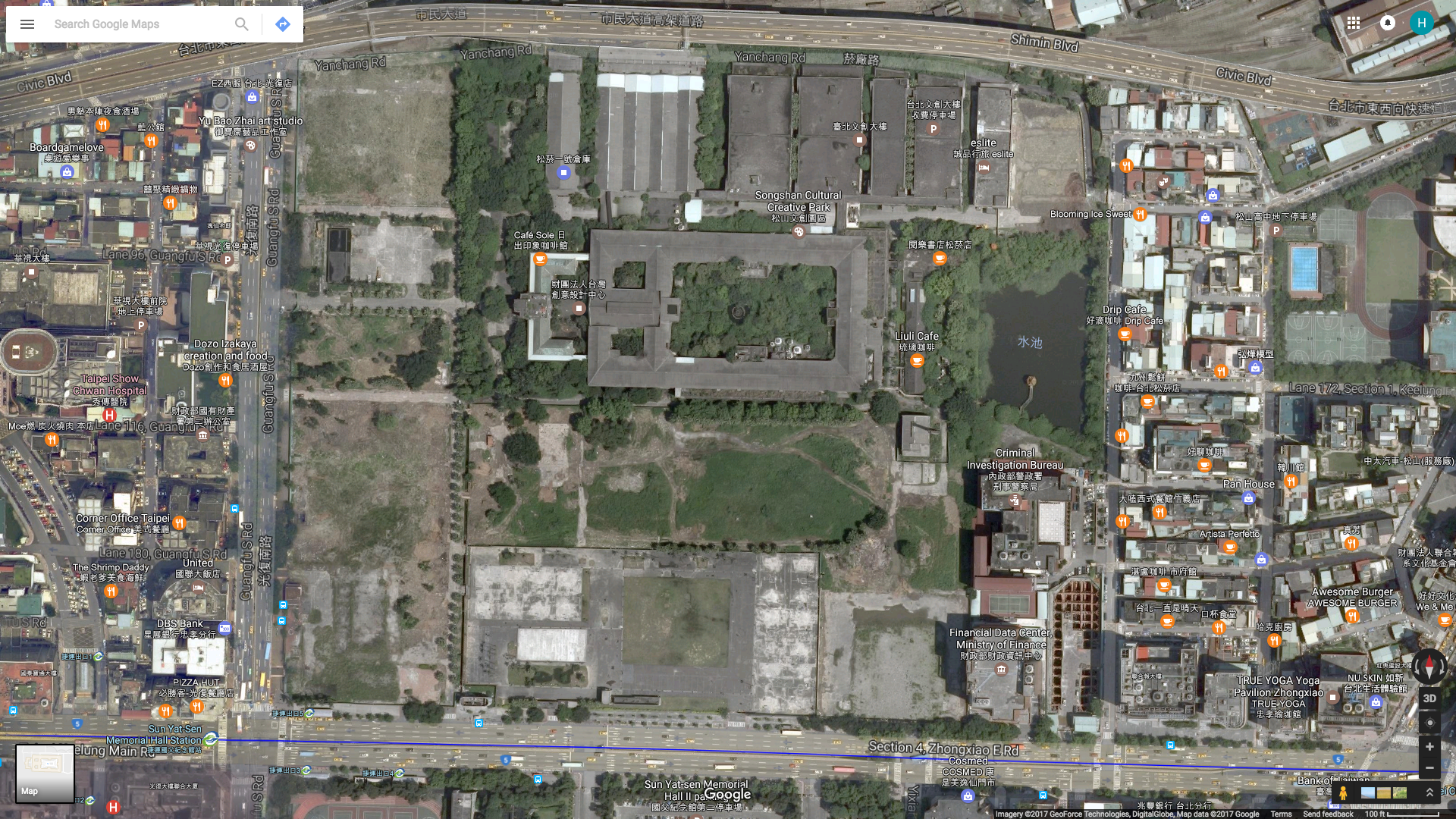
After (from Esri)
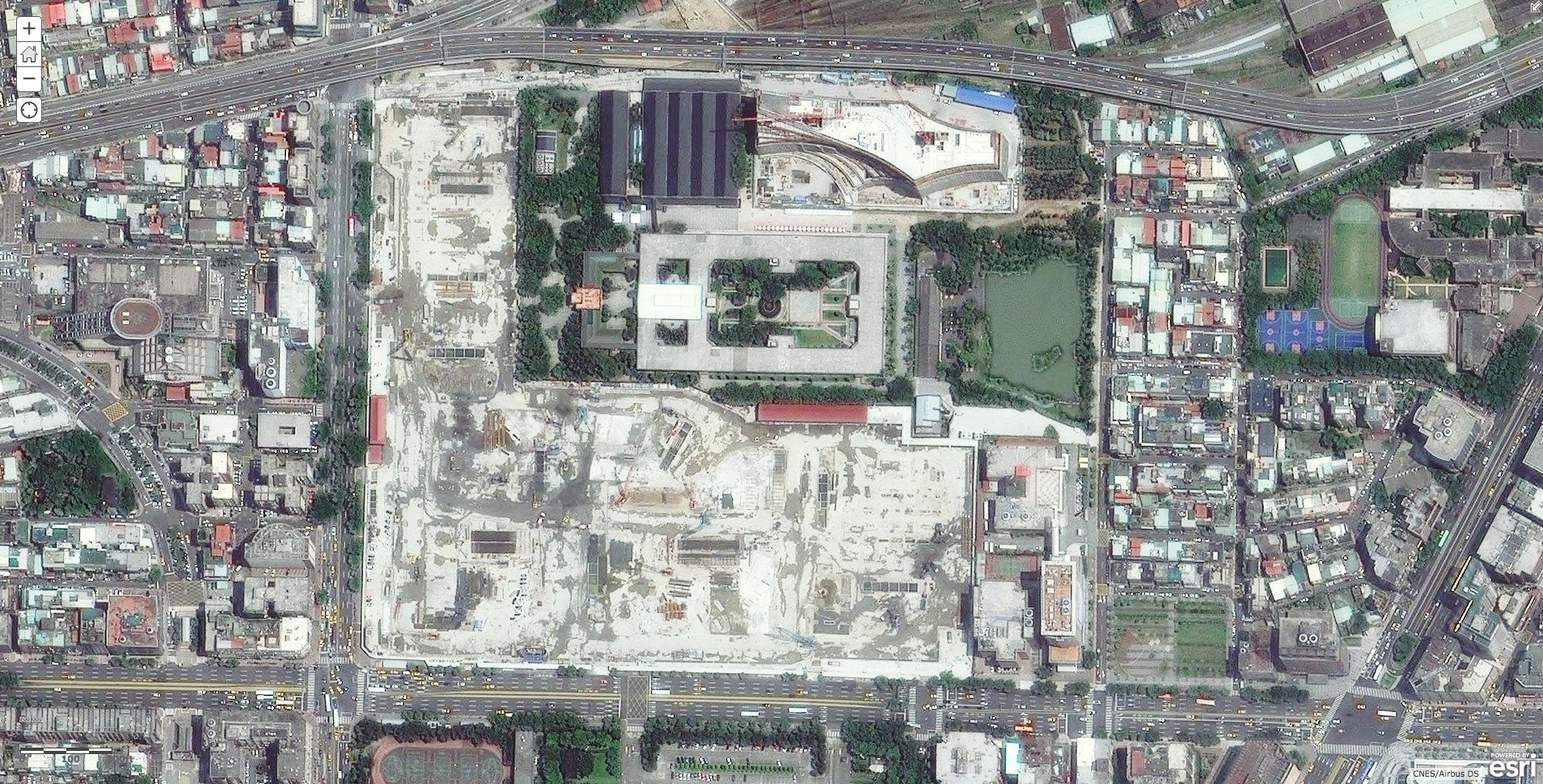
Photo (below) Credit: Leah Suffern



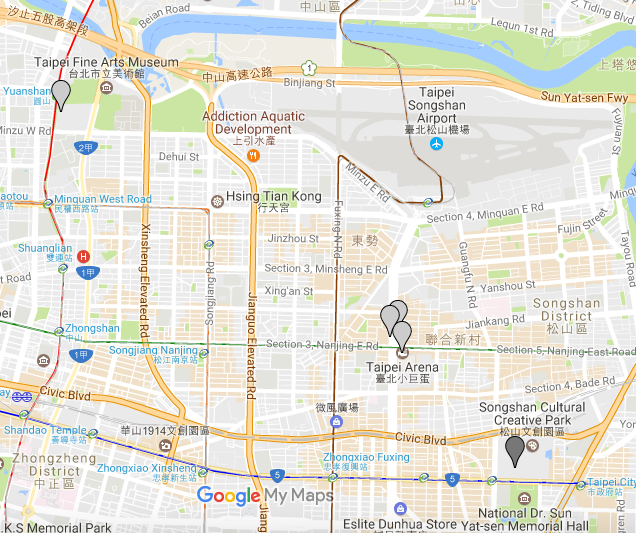
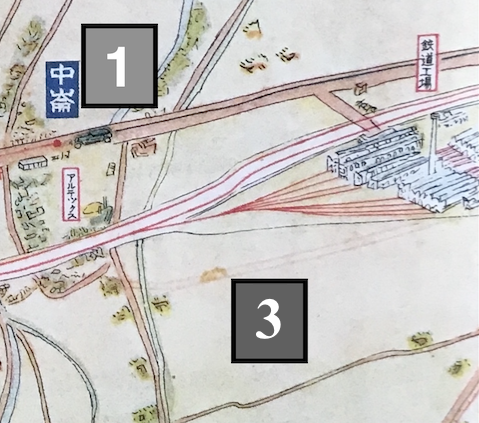



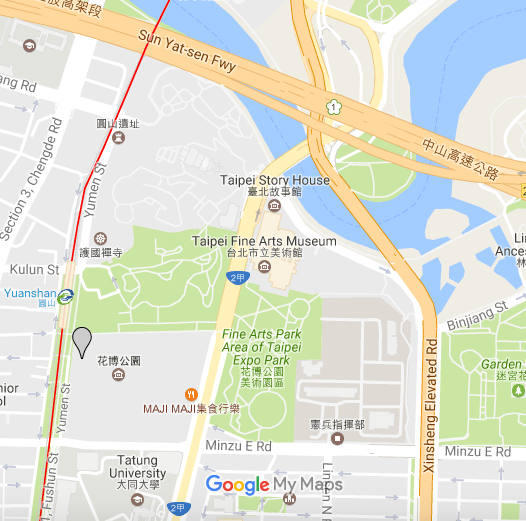
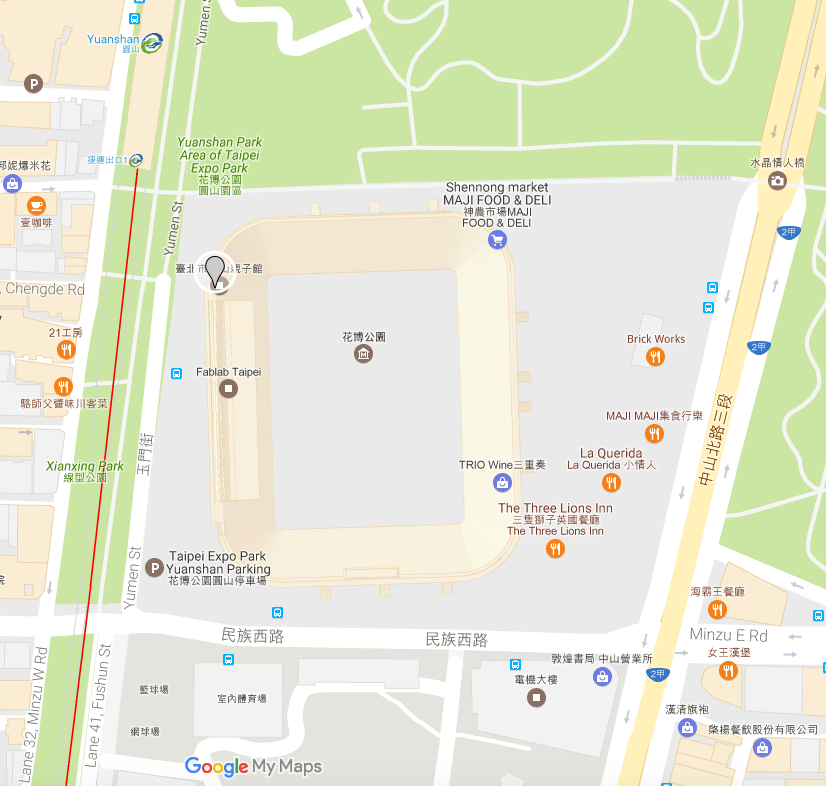
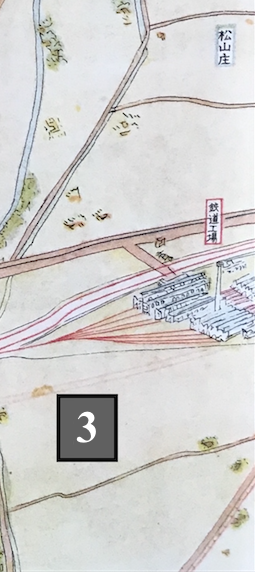
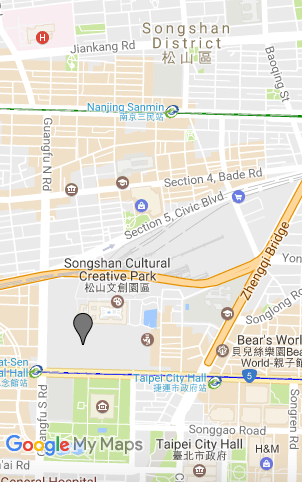
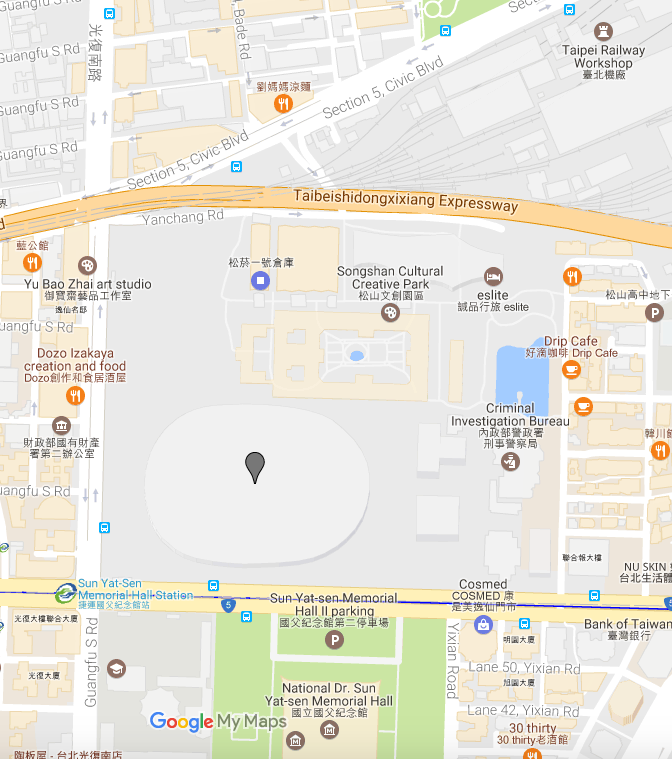
0 Comments